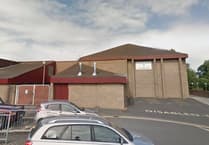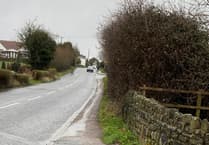IT'S easy to forget the heavy industrial heritage of the Forest. The railways, tin works, coal and iron mines, and stone quarries of the industrial age are now a distant memory, writes Dave Kent.
I have just discovered a railway map of the Forest made, I think, in 1917. It is full of references to this forgotten world, when the Forest was criss-crossed with tramways, rail tracks, passenger lines, sidings and junctions.
The Forest economy relied on the railway system to make its minerals and other industrial products available to the outside world.
Part of the rail network dates back to earlier days of horse drawn trams and non-standard gauges of 3 – 4 feet, until the national standard gauge of 4ft 8½ins was generally adopted around 1870.
My map shows the way in which the railway system in the Forest developed.
The local rail network system was extended for the Forest’s mining products to be distributed to the outside world.
The industrial circuit at the centre of the Forest includes Parkend, Whitecroft, Cinderford, Lightmoor and Moseley Green.
There were also passenger lines around the edges of the Forest: Gloucester to Cardiff via Lydney, Ledbury to Gloucester via Dymock (the Daffodil Line, now no more), and the Ross to Chepstow line through a Lydbrook connection.
The Great Western terminal line station at Coleford connected with the Forest terminal line on the Milkwall – Coleford spur from Parkend.
All these stations are now no more, except for Lydney and Chepstow on the Gloucester – Cardiff line, and stations on the Lydney to Parkend line with its revival by the Dean Forest Rail Society.
All the Forest lines and stations were connected to this circuit.
The Mineral Loop line diverged from the main line at Whitecroft, through the Moseley Green tunnel to serve the mines at New Fancy, Lightmoor and Foxes Bridge collieries, completing the circuit at Drybrook Road, Cinderford.
There were tunnels at Upper Lydbrook, Moseley Green and on the Bullo Pill to Soudley line.
As a relative newcomer to the Forest I arrived too late for journeys on the old Forest railway, but I remember the semi-derelict railway carriages, apparently abandoned, in 1974, on obsolete rail tracks at Parkend, at the Marsh area of the village overlooking the village cricket field, when they had outlived their usefulness.
I also remember seeing the old Severn Bridge Station at Purton, where there was a 500 metre tunnel constructed on the Purton side of the Severn to complete the line from Lydney to Sharpness and Berkeley via the old Severn Bridge.
This track had been unused after the great rail disaster of 1961 when the bridge was severely damaged and the line permanently closed.
By the way, the Spion Kop quarry at Bicslade (by Cannop Ponds) , was not named by a Liverpool fan, but was probably in commemoration of a battle in the South African War, as the Trafalgar Colliery near Brierley was named after a famous sea battle.




